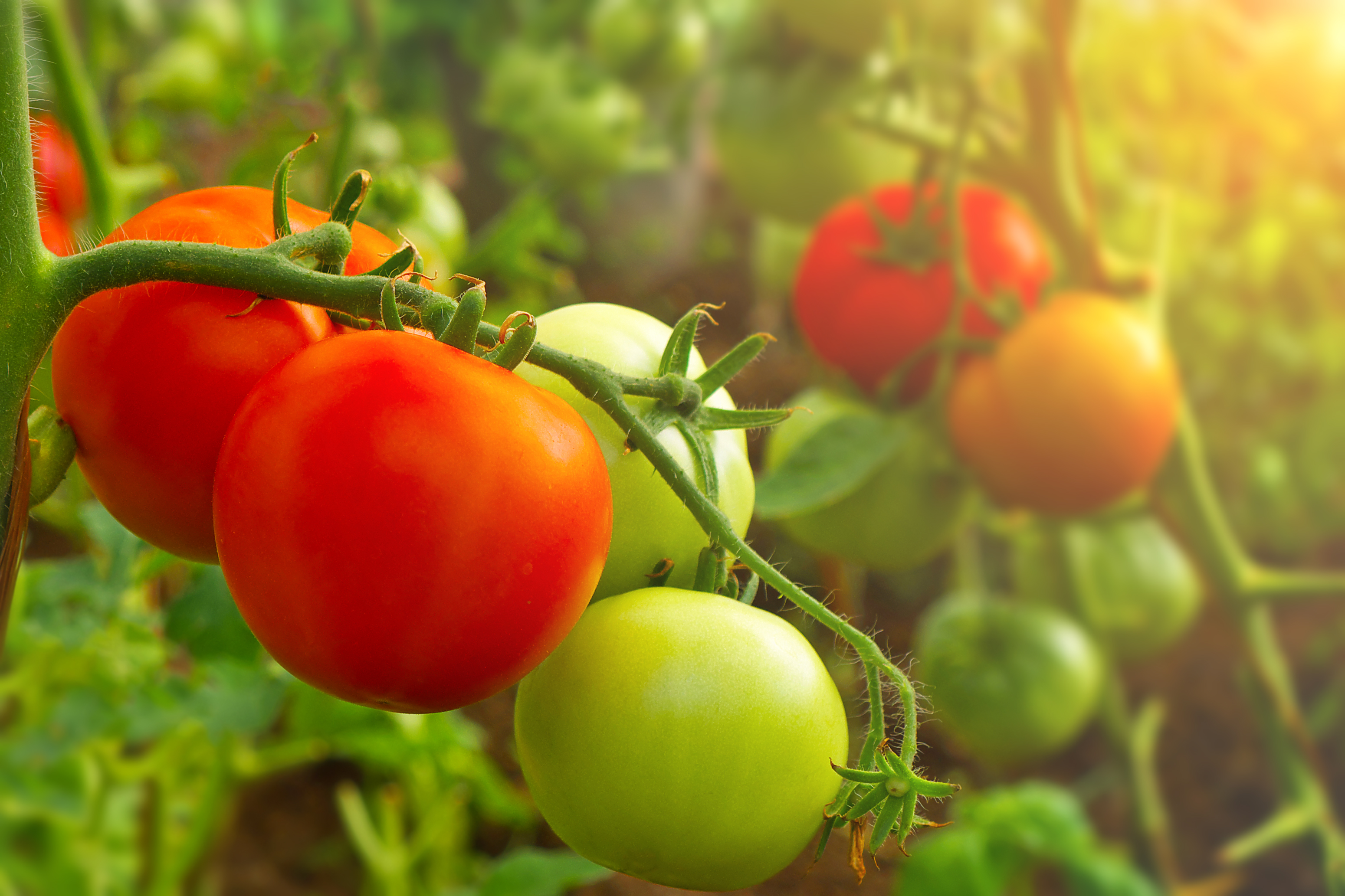
Produce 101: Tomatoes
Tomatoes are an ancient crop, thought to have originated in Central America centuries ago. While the tomato has become associated with Mediterranean cuisine, they were relatively late to the European pantry, not arriving until the 16th century.
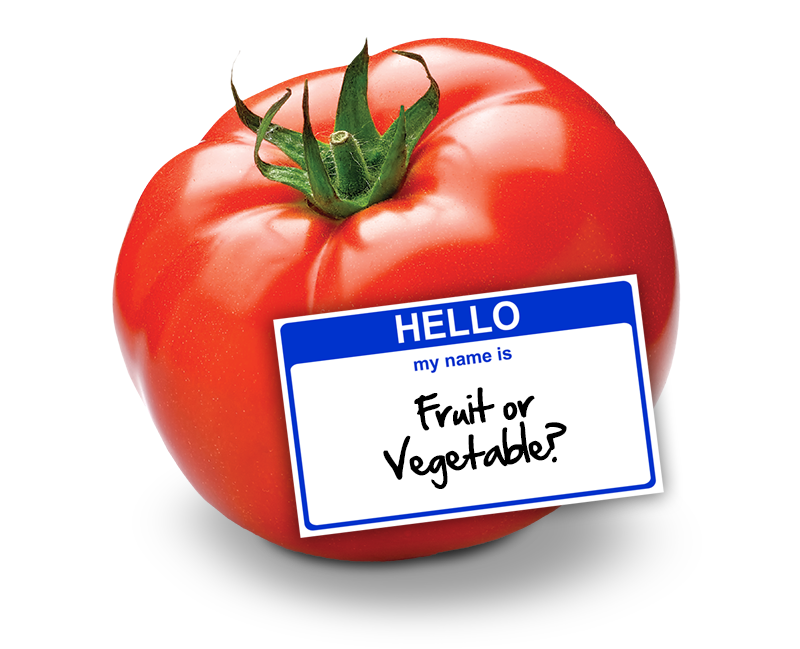
Are Tomatoes a Fruit or a Vegetable?
Botanically, tomatoes are a fruit, but the Supreme Court said they’re a vegetable since they are used as such. There’s a great Miles Kington quote that comes to mind: “Knowledge is knowing that a tomato is a fruit. Wisdom is not putting it in a fruit salad.”
Produce 101: Tomatoes — Colors and Flavors
Tomatoes are amazingly diverse and come in a multitude of sizes, shapes, colors and flavors–and they will add constant variety to your menus. Today, we are going to cover the basics and save the specialty varieties, like Heirloom tomatoes, for another time.
Typically, yellow tomatoes are sweeter and less acidic, where red tomatoes have that traditional rich robust flavor we commonly know.
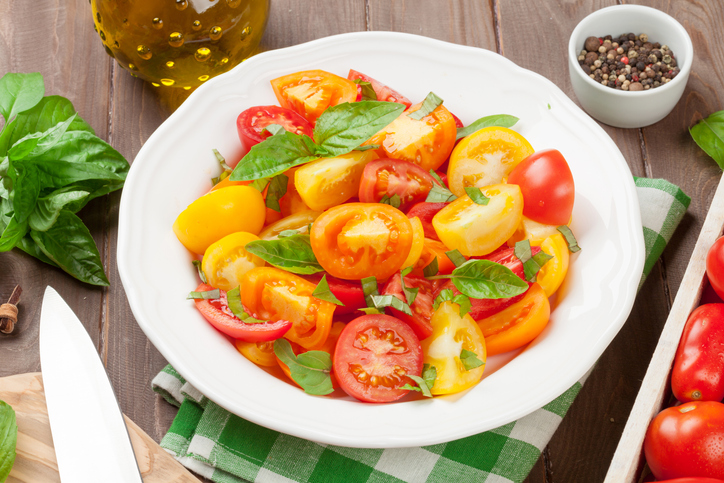
Let’s Start with the USDA Grade Standards
Field Grown USDA Standards
- US #1
- US Combination
- US #2
- US #3
Hothouse Grown USDA Standards
- US #1
- US #2
The grade standards are based on physical appearance as well as maturity indices. Look for tomatoes that are well-formed for the variety, a uniform color throughout the case, a smooth skin, and are firm and not overripe.
Produce 101: Tomatoes — Field Grown vs. Hothouse Grown
What’s the difference? Well, field grown tomatoes are grown outdoors in a traditional agricultural setting. Farmers, harvesters, and maintenance crews are walking up and down the rows maintaining the vines; whereas, hothouse tomatoes are grown in a structure such as a greenhouse or hoop house.
It’s a controlled environment with more consistent harvest cycles. They grow a little quicker, and the costs can be a little more.
Hothouse tomatoes often come on the vine, and while it certainly looks great, it actually has a practical function. The calyx keeps the tomatoes from drying out as fast. So, it extends the shelf life.
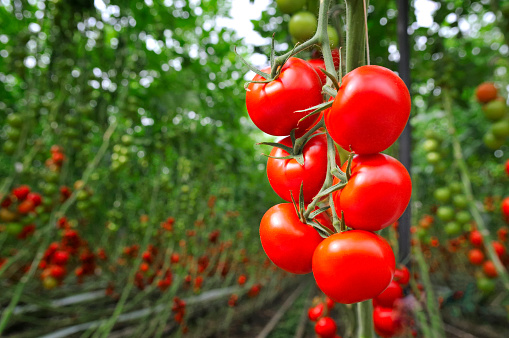
How Do you Choose Which Tomato to Use?
Well, you need to decide how you’re going to use the tomato. If you are looking for a uniform slice to go on top of a sandwich or as a featured part of your dish, you probably want to go with a #1. It’s a more consistent size and color.
If you are processing it down into something like salsa…exterior appearance doesn’t really matter as long as the quality of the fruit is good. So, save some food cost and look at a #2 or #3 pack. Typically, they are called field run tomatoes, or even culls, some people call them salsa tomatoes. You’ll save a little money and you’ll get the same quality.
What is the Best Tomato for Cooking?
Roma tomatoes are graded the same as round tomatoes. But they are used a little different. It’s a better cooking tomato. While you can certainly use them raw, sliced, or diced, they really shine in a cooking application. The walls of the Roma tomato are thicker and hold up better in the cooking process.
Green tomatoes are also great to cook with. You can use them raw, they are a little more acidic and have some tartness to them. Typically, they are fried, especially in the South, but you can also pickle them.
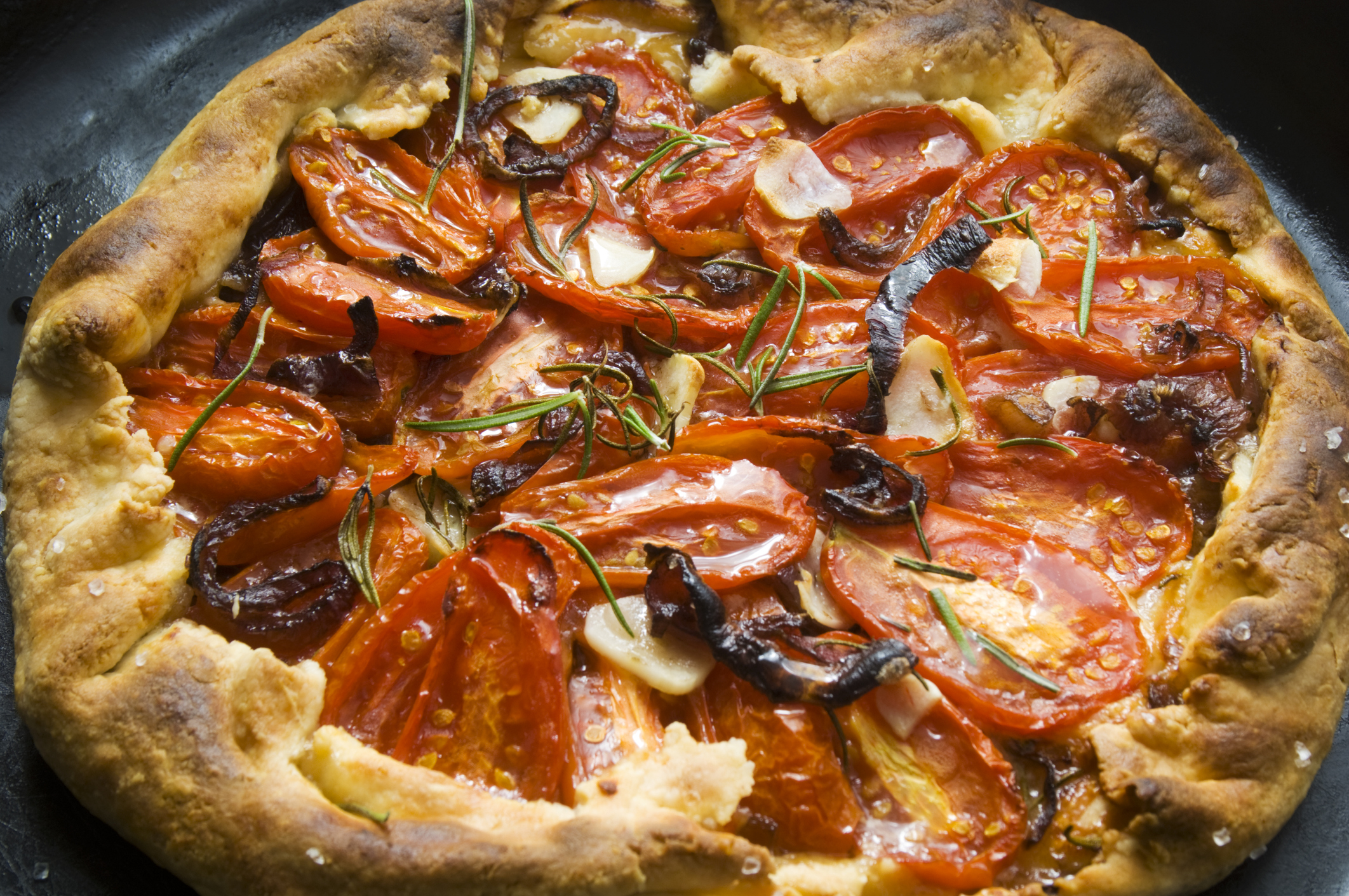
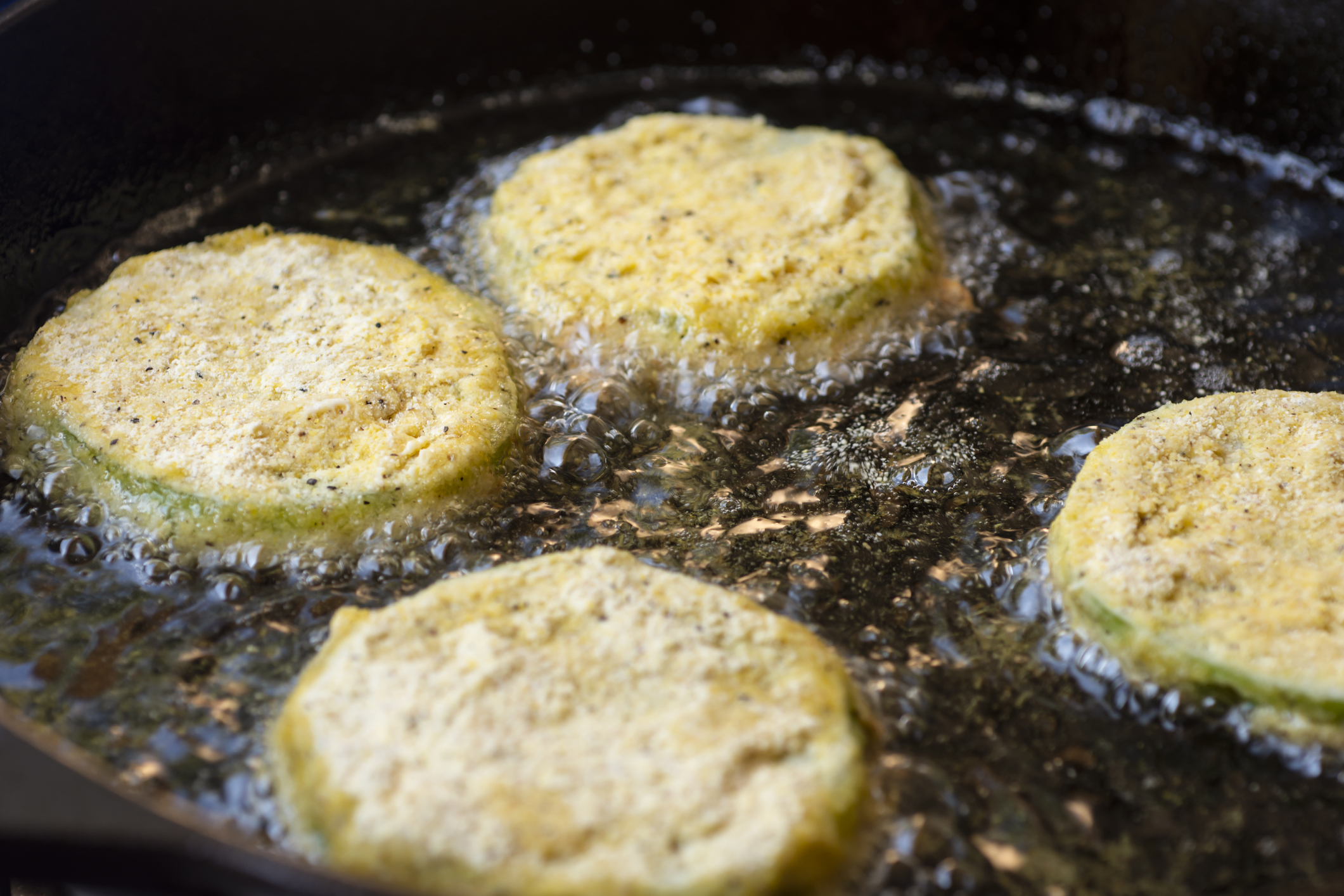
Produce 101: Tomato Color Chart
Much like bananas, tomatoes have a color-based ripeness designation.
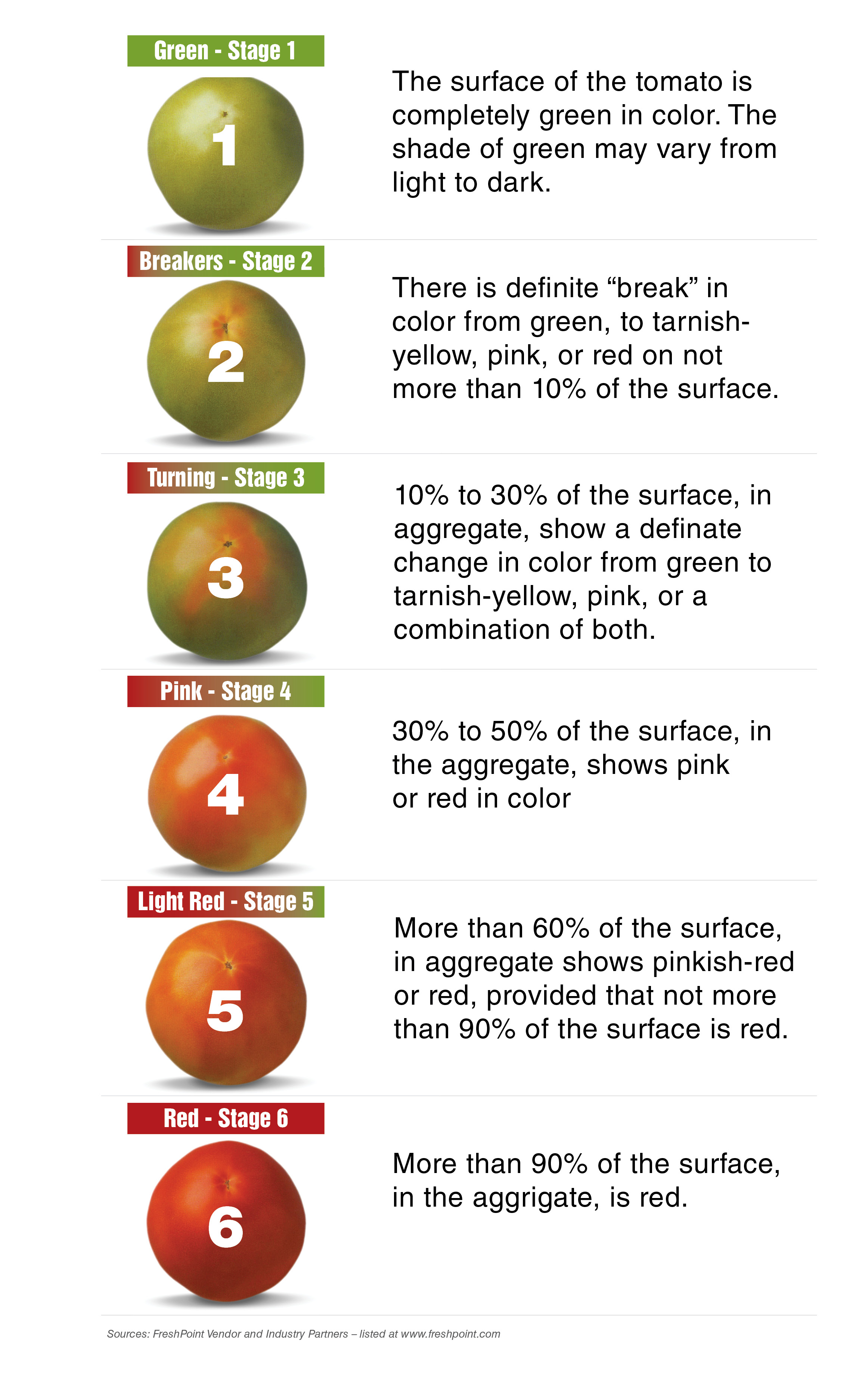
Produce 101: Tomatoes — Storage and Handling
Tomatoes will continue to ripen when exposed to warm temperatures, so you do have the ability to ripen tomatoes. As tomatoes ripen, they produce ethylene, so care needs to be taken to avoid storing them near ethylene sensitive products. Tomatoes are also sensitive to ethylene exposure, and green tomatoes will begin to ripen when exposed to ethylene.
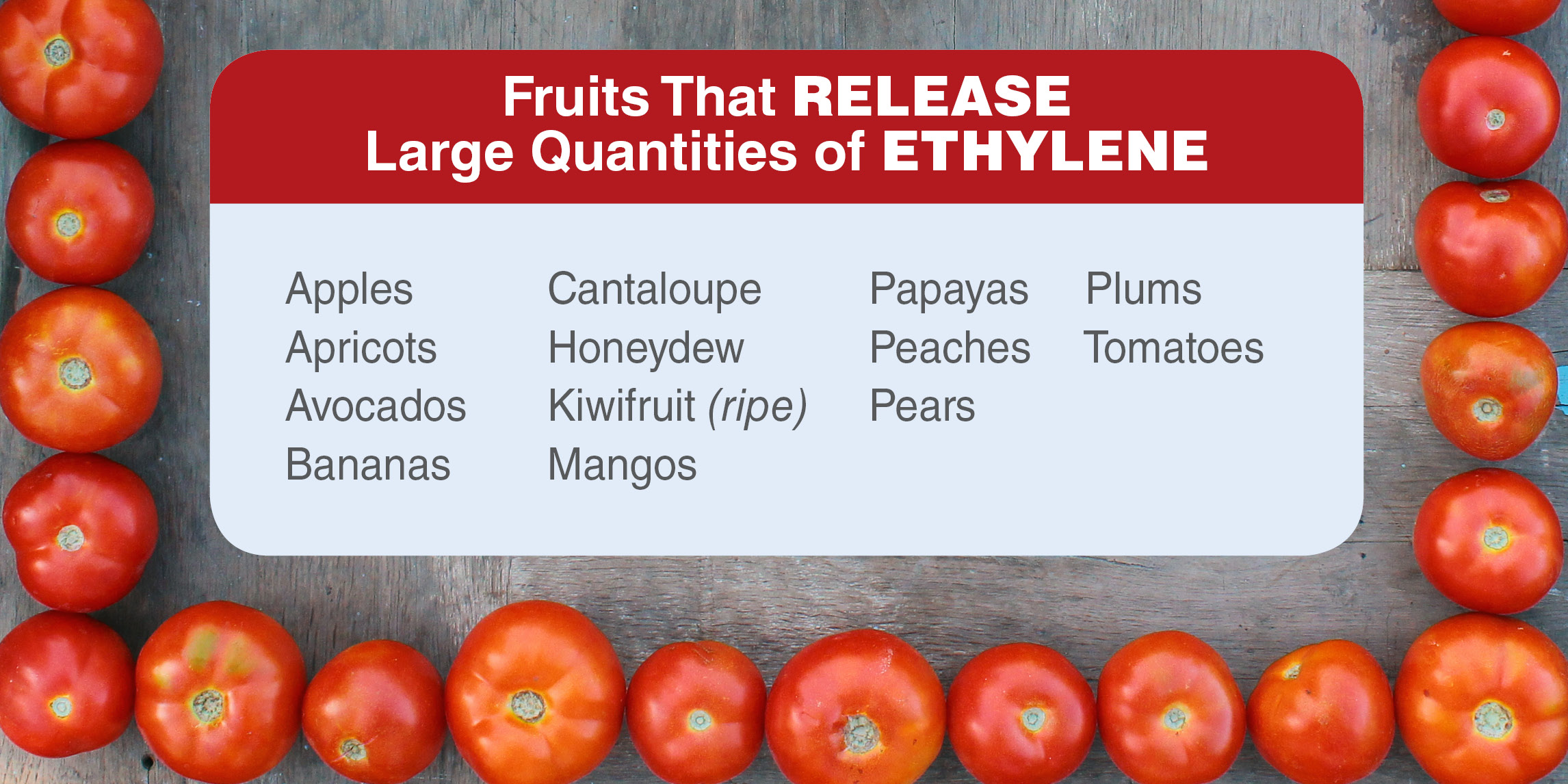
Tomatoes loathe cold temperatures, as it affects not only the texture, but the flavor. A mealy texture with a bland flavor are sure signs that your tomato has gotten a bit too cold along its way. The proper storage of tomatoes is out of refrigeration in the cooler part of your dry storage area. Keep them away from hot areas–don’t keep them by the stove.
The ideal storage temperature is 55 degrees F.
Once they are ripe, they can be stored in refrigeration for a *short* period of time.
*Note: green tomatoes should be stored in refrigeration to slow the ripening process.
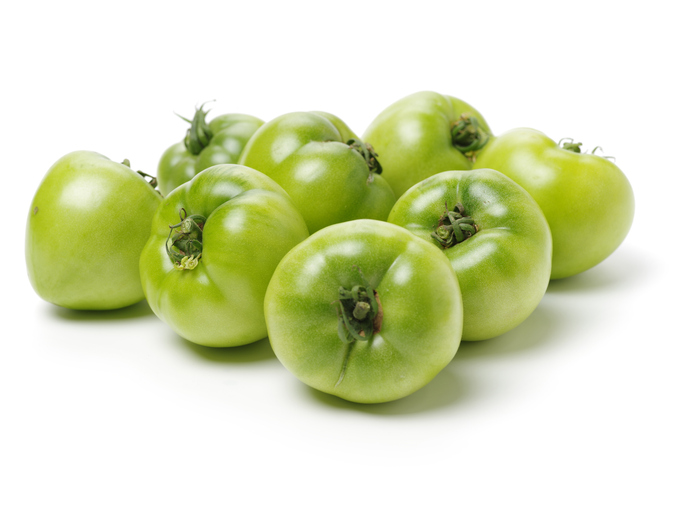
So, When You Get Your Tomatoes, What Are You Looking For?
Well, you want uniform size and shape in the case, and more importantly, you want uniform color. You want to make sure there are no growth cracks on the surface, that would indicate heavy rains or it was a little too hot and the tomatoes grew too fast. And you want them free from decay. Tomatoes are very susceptible to bruising so keep handling to a minimum. Don’t stack boxes on top if at all possible, and by all means, don’t drop the box of tomatoes.
Sizing of Round Tomatoes
Sizing of round tomatoes is based on the diameter of the fruit, with the USDA size grades being Small, Medium, Large, and Extra-large. You may see a different nomenclature on your tomato boxes, 4×5, 5×6, etc.
This harkens back to when all tomatoes were hand-packed and this was a way of easily notating the size, as it indicates the number of rows by the number of columns each box of tomatoes would hold. The smaller the numbers indicates a larger tomato.
Here is a Handy Tomato Size Chart:

Dan talks about Produce 101: Tomatoes
Contact your Marketing Associate about adding tomatoes to your next order. If you are not a customer, find out how to become one today!
Content provided by Chef Daniel Snowden, the Director of Culinary Development for FreshPoint Central Florida. He has been in the produce industry almost 20 years, and loves getting geeky about food. Additional contributions by Lisa Brizard.
Some tools you can use:
Visit freshpoint.com for our seasonal availability guides—and while you are there, check out the FreshPress, our latest market report. Place your orders online with ease at myfreshpoint.com. Did you know you can receive real-time reliable delivery alerts on the day of your delivery? Activate and subscribe at FreshPoint.com/mydelivery
Download our app and take your produce management on the go. Place orders, review flyers, watch videos…all in one spot!
Find out more details about our UBU program, and how we are shining a spotlight on food waste while making value and food safety a priority.
We buy local to strengthen regional economies, support family farms, preserve the local landscape, and to provide fresh-from-the-farm food to our customers. Local.freshpoint.com connects you to your local farmers like never before! Customize your search by zip, city, state, radius…even by crops and growing methods. Pop in your zip code and learn about our local farmers.
Socialize with us!
Did you know we are on YouTube? Head over to our page and check out our 75+ videos. Don’t forget to subscribe, and also be a part of our Bell Team—hit the little bell icon to get notifications when we upload new videos.
Follow FreshPoint, Inc. on Facebook, Twitter, Instagram, and LinkedIn…and follow The Produce Hunter on Instagram as she finds the best specialty produce at the Santa Monica Farmers Market.

